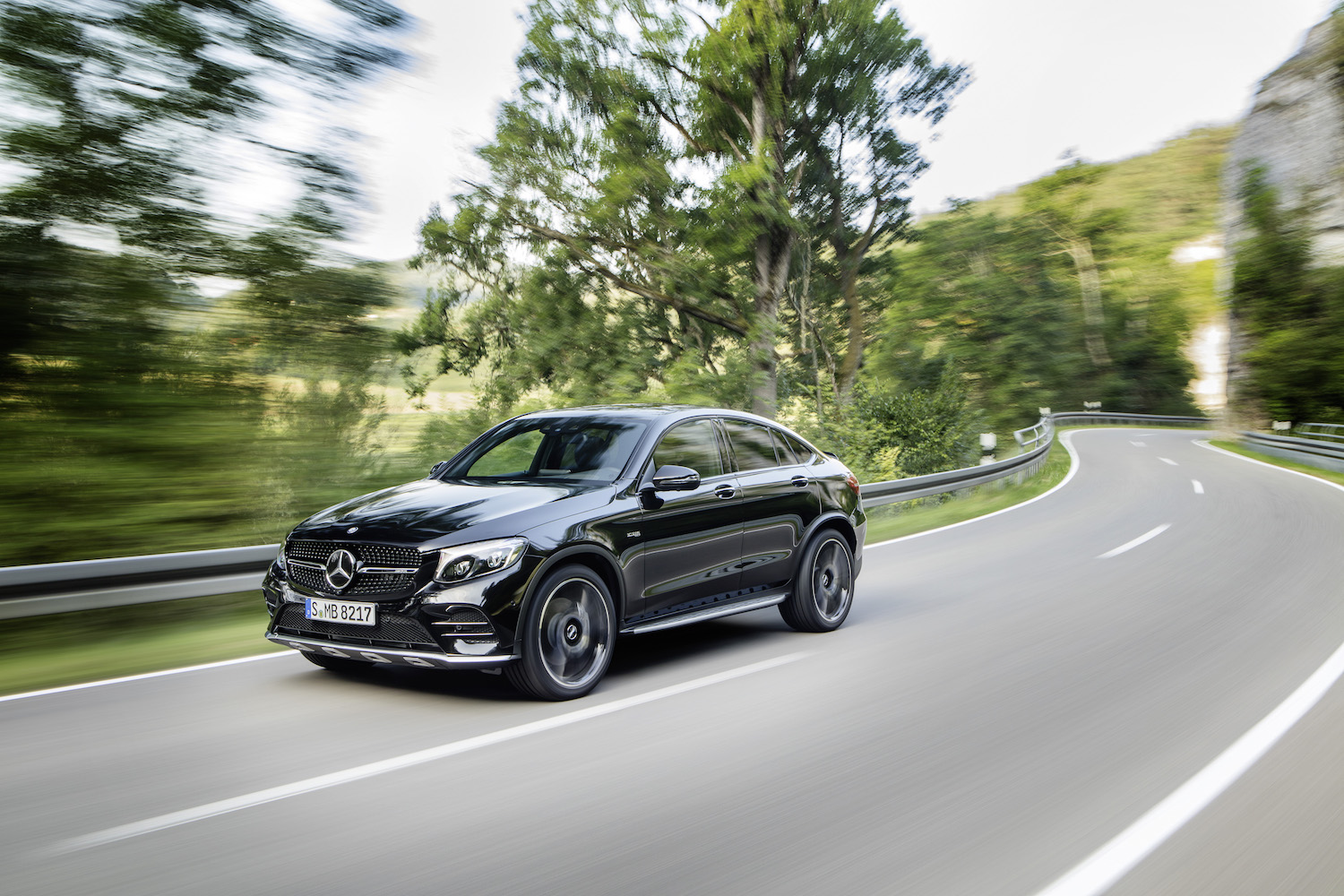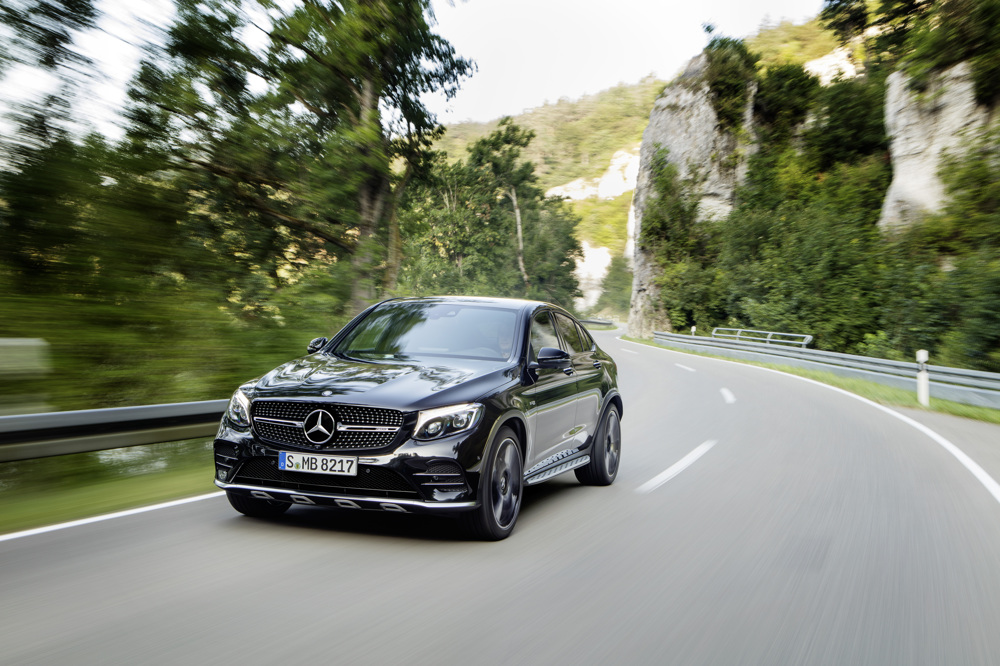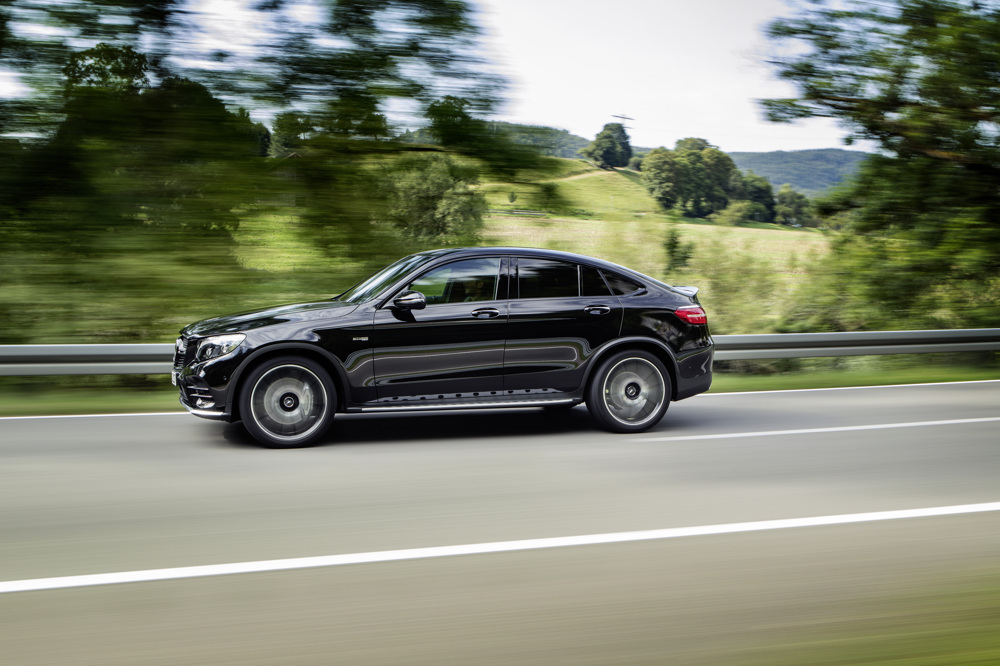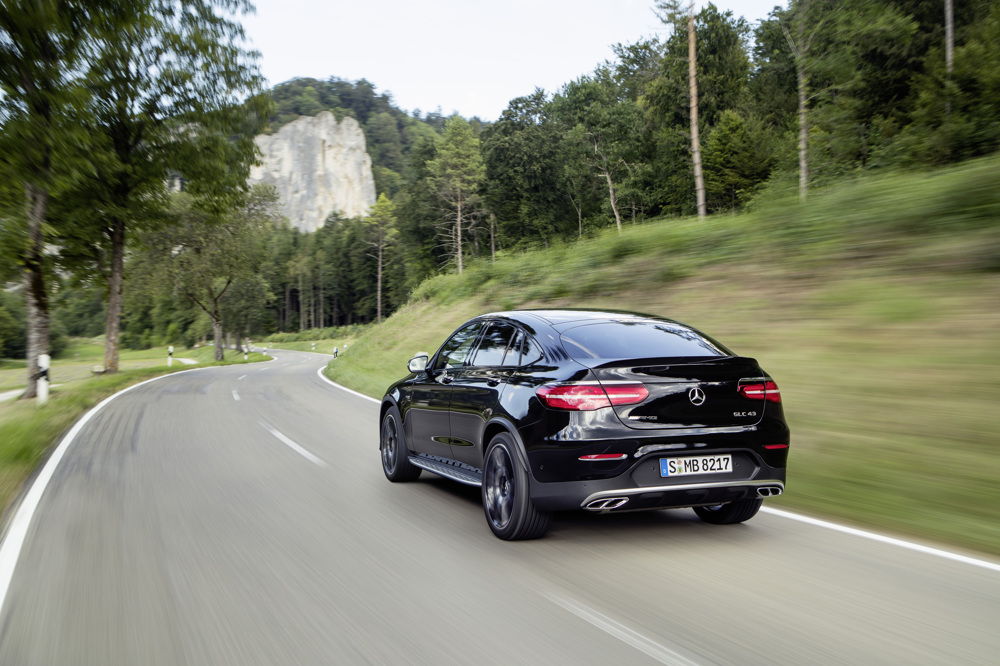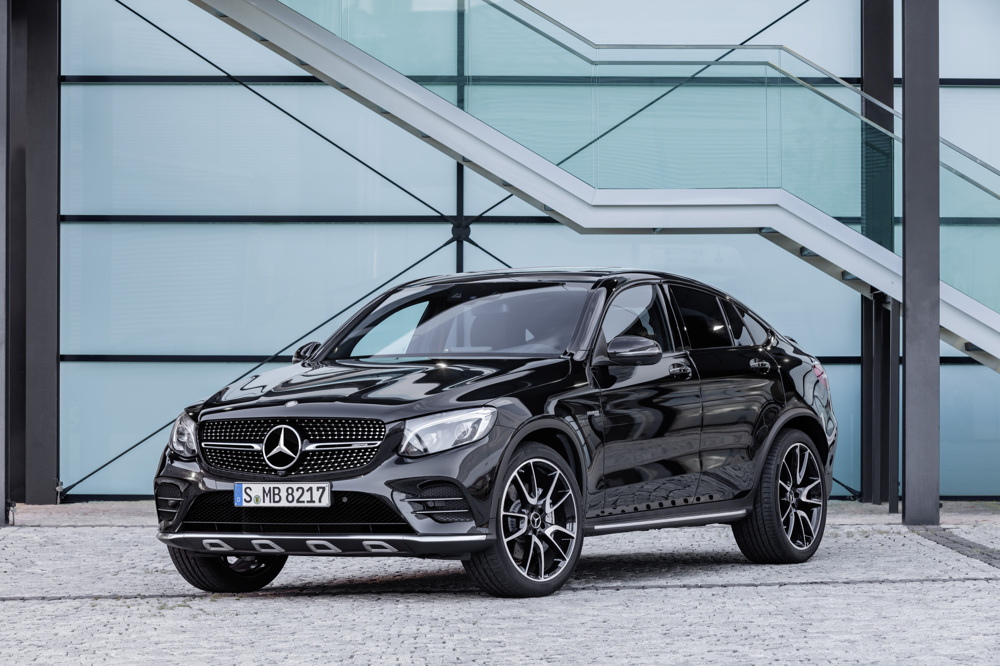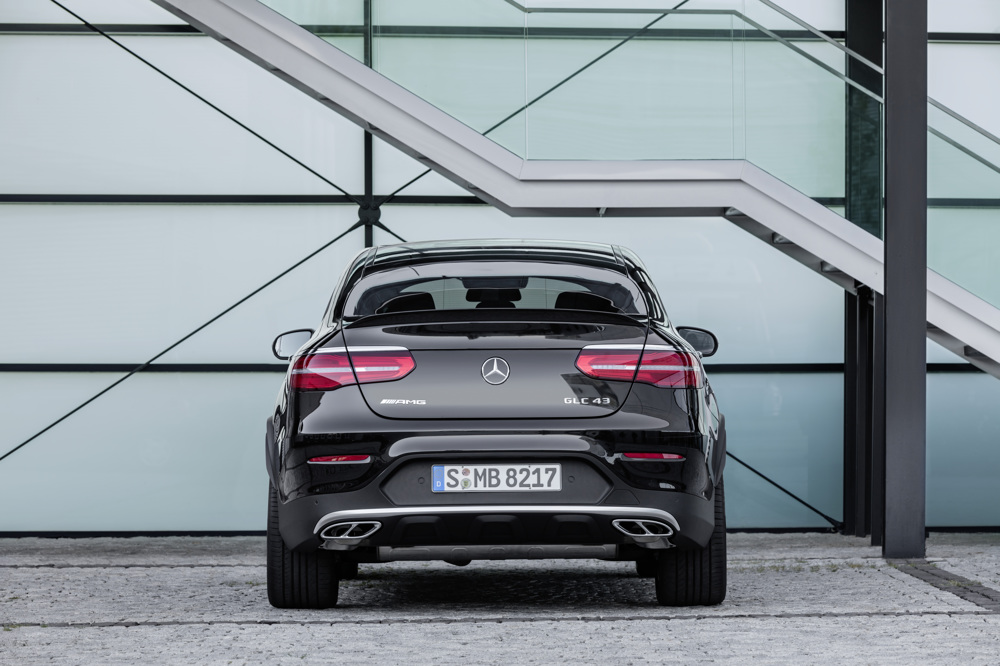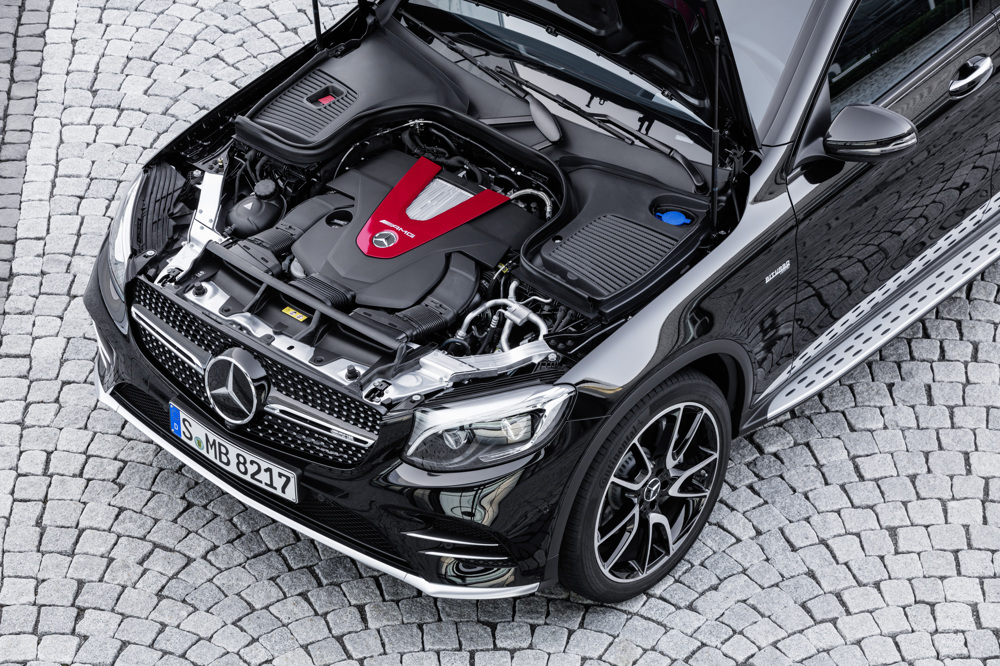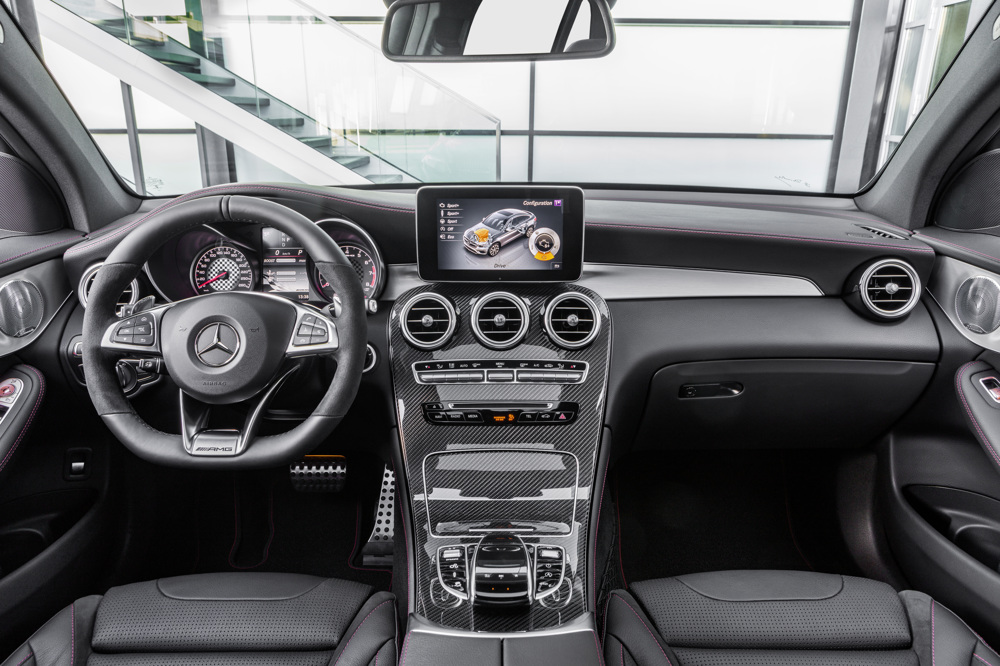Mercedes-AMG’s latest “43” nameplates have replaced the AMG-Sport nomenclature and now the German automaker has revealed its latest offering: the GLC43 Coupe.
The compact Mercedes crossover coupe goes toe to toe with BMW’s new X4 M40i and brings with its stylish design a 3.0-liter bi-turbo V6 making 362 horsepower and 384 pound-feet of torque. AMG Performance 4Matic all-wheel drive and a 9-speed automatic transmission apply power to the pavement. Keeping the GLC43 flat in corners is an air body control active damping system. Mercedes-Benz says the crossover can handle itself off-road as well, but I’d suggest a more rugged ride for those kind of thrills.
“The new GLC43 Coupe is characterized by a high level of agility and sporty driving dynamics. With its expressive design and high everyday practicality, the Coupe is able to appeal to new target audiences,” according to Tobias Moers, chairman of the board of management of Mercedes-AMG GmbH.
Read More: 2017 Cadillac XT5 Review
Frankly, the luxury vehicle market is flooding with excellent crossovers, but the 43 AMG models offer a nice blend of performance and luxury at a price point thousands less than full-bodied 63 AMG models. Speaking of performance, the GLC43 AMG Coupe hits 60 mph in 4.8 seconds and is limited to a 130 mph top speed. For reference, the BMW X4 M40i accelerates to 60 mph one-tenth of a second quicker and tops out at 150 mph.
As styling goes, the Porsche Macan may still have the edge over both the Merc and BMW, but the GLC is still a rather handsome shape. While the BMW X6 looks proportionally better than the X4, the GLC may wear the coupe design better than its larger GLE Coupe sibling.
Mercedes-AMG has yet to announce pricing for the GLC43 AMG Coupe, but expect it to be priced near the Porsche Macan S and BMW X4 M40i starting figure of mid-$50,000. The new AMG will begin arriving in U.S. showrooms starting in the first quarter of 2017.
